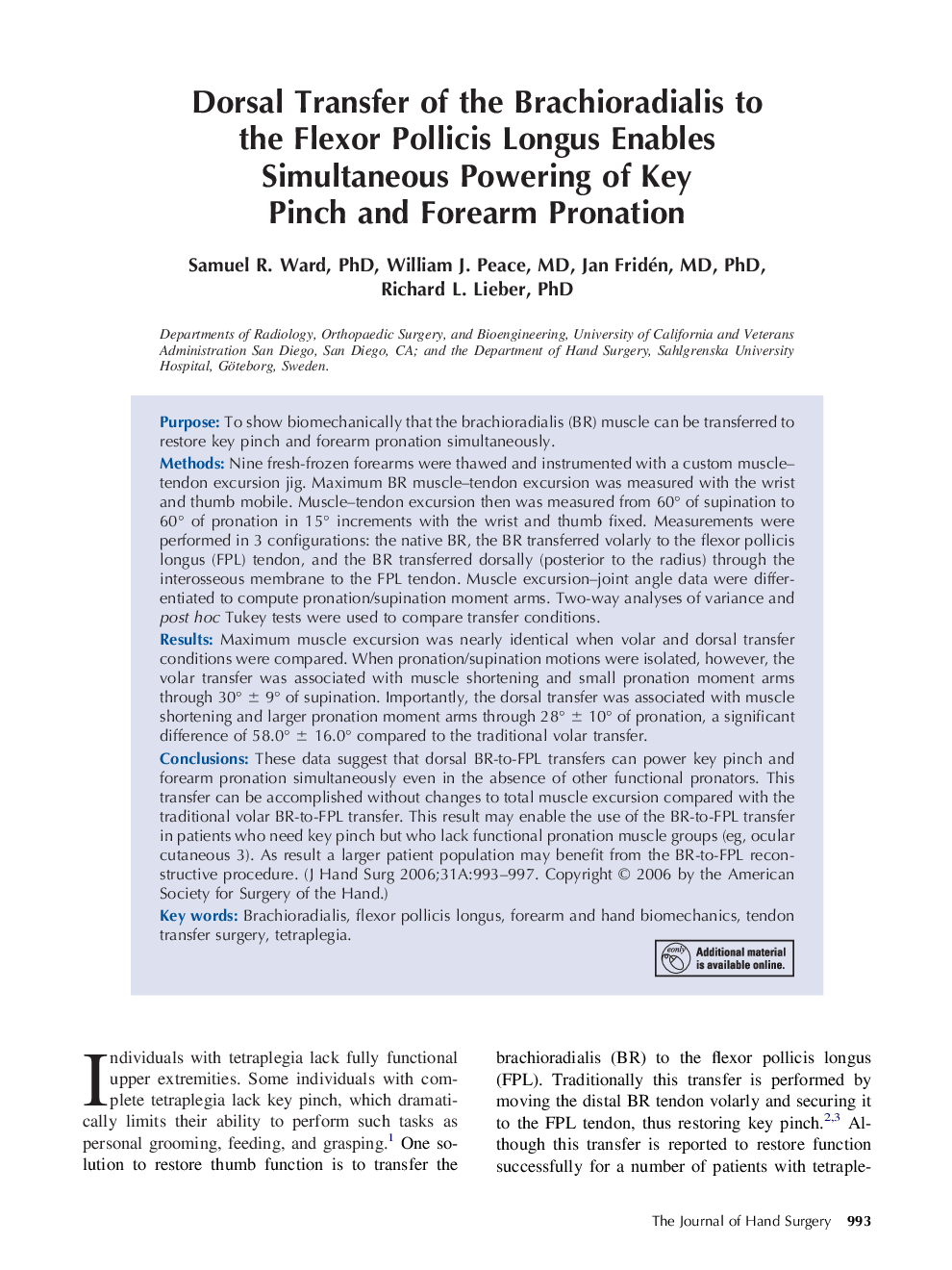| کد مقاله | کد نشریه | سال انتشار | مقاله انگلیسی | نسخه تمام متن |
|---|---|---|---|---|
| 4071303 | 1604462 | 2006 | 5 صفحه PDF | دانلود رایگان |

PurposeTo show biomechanically that the brachioradialis (BR) muscle can be transferred to restore key pinch and forearm pronation simultaneously.MethodsNine fresh-frozen forearms were thawed and instrumented with a custom muscle–tendon excursion jig. Maximum BR muscle–tendon excursion was measured with the wrist and thumb mobile. Muscle–tendon excursion then was measured from 60° of supination to 60° of pronation in 15° increments with the wrist and thumb fixed. Measurements were performed in 3 configurations: the native BR, the BR transferred volarly to the flexor pollicis longus (FPL) tendon, and the BR transferred dorsally (posterior to the radius) through the interosseous membrane to the FPL tendon. Muscle excursion–joint angle data were differentiated to compute pronation/supination moment arms. Two-way analyses of variance and post hoc Tukey tests were used to compare transfer conditions.ResultsMaximum muscle excursion was nearly identical when volar and dorsal transfer conditions were compared. When pronation/supination motions were isolated, however, the volar transfer was associated with muscle shortening and small pronation moment arms through 30° ± 9° of supination. Importantly, the dorsal transfer was associated with muscle shortening and larger pronation moment arms through 28° ± 10° of pronation, a significant difference of 58.0° ± 16.0° compared to the traditional volar transfer.ConclusionsThese data suggest that dorsal BR-to-FPL transfers can power key pinch and forearm pronation simultaneously even in the absence of other functional pronators. This transfer can be accomplished without changes to total muscle excursion compared with the traditional volar BR-to-FPL transfer. This result may enable the use of the BR-to-FPL transfer in patients who need key pinch but who lack functional pronation muscle groups (eg, ocular cutaneous 3). As result a larger patient population may benefit from the BR-to-FPL reconstructive procedure.
Journal: The Journal of Hand Surgery - Volume 31, Issue 6, July 2006, Pages 993–997